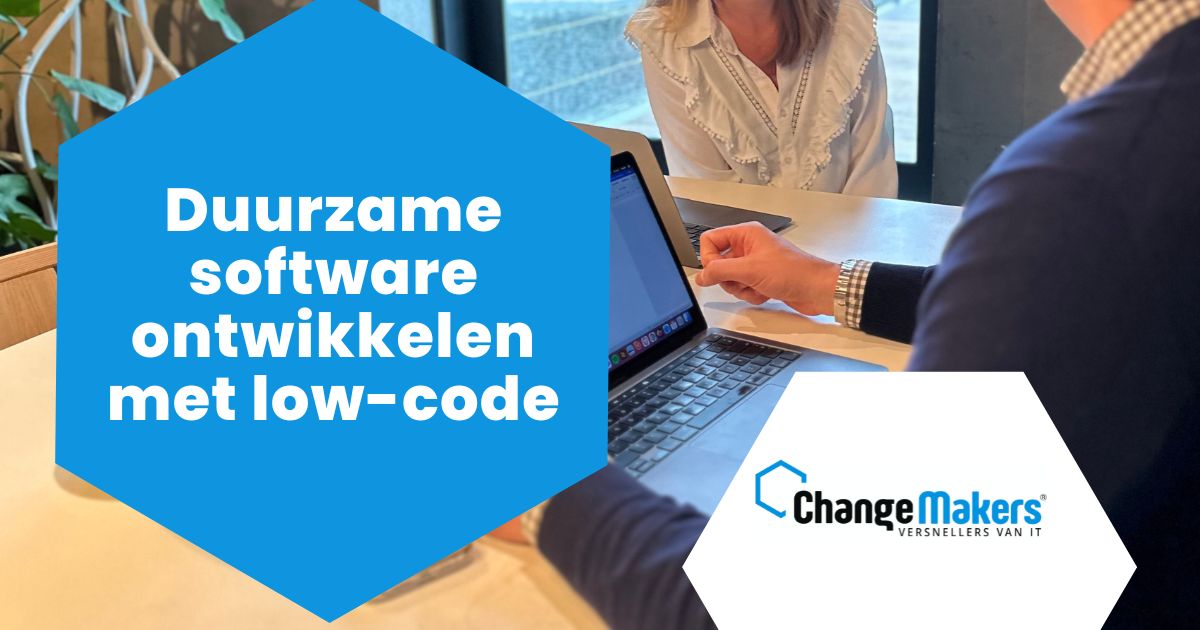Sustainability is a topic that has become increasingly important in recent years, not only in the social sphere, but also within companies and organizations. And this also applies to software development. More and more organizations are realizing that sustainability must also play a role in their software development process. The times to invest in unsustainable applications are over. Low-code allows you to shape and accelerate your IT in a sustainable way. In this blog, we tell you about it!
What is sustainable software development?
What exactly is sustainable software development? This is about creating software in a way that considers the long-term effects on the environment, society and economy. You want the software not only to be functional, but therefore to have the least possible negative impact on our environment and society.
If you want to develop software sustainably, it is important to:
- Use sustainable development methods and tools;
- CO2 emissions to be minimized;
- Reduce waste;
- Maximize reusability;
- Create software that contributes to sustainable development and economic growth.
Read tip! Low-code vs. no-code: the differences and similarities
Why is it important to incorporate sustainability into software development?
When you integrate sustainability into software development, you can contribute to a sustainable future. This is important because the demand for software is growing tremendously, and so is the impact on the environment and our society. Consider, for example, the energy consumption of data centers and CO2 emissions from software development.
So minimize negative impacts and contribute to a sustainable future by developing software sustainably.
Examples of sustainable software development
There are several ways in which software development can be sustainable. A good solution, for example, is open source software. This increases code reusability and reduces waste.
Another good solution is low-code. Low-code allows you to develop software quickly and efficiently with less manual code and less energy consumption.
Read tip! These are the low-code trends in 2023
Why is low-code sustainable?
The name actually says it all. Low-code requires little code when programming and maintaining the software. Thus, less time and energy is required. Moreover, this way fewer errors and bugs arise in the software which means less maintenance.
Low-code also allows you to make work processes more efficient and digitize them like never before. For example, choose to digitize the customer registration form in the office. As you can imagine, that saves a lot of paperwork.
Or when you are working with multiple IT vendors, have insufficient IT capacity or IT does not understand the business needs, it is an ideal solution.
Low-code is also a forward-looking, fast and efficient solution here. It really is the future of application development because it also won’t have an End of life anytime soon.
According to Gartner, by 2025 even 70% of all applications will be made with low-code technology
All of these factors, then, make for faster development cycles and lower resource consumption, including energy, hardware and human resources.
Start sustainable software development today
If you care about sustainability, you can’t be left behind with sustainable software development. At Changemakers, we work on sustainable low-code projects every day. Wondering how low-code can shape and accelerate your IT in a sustainable way? Contact us today and we’ll tell you exactly how we can help you.




